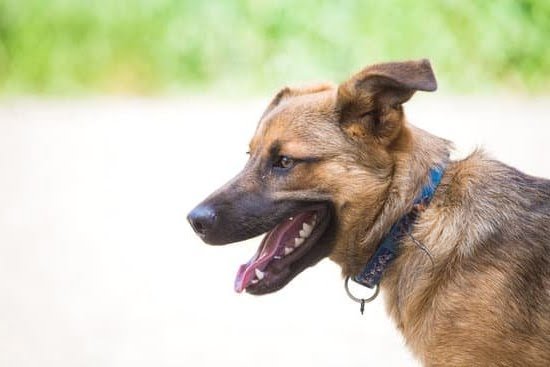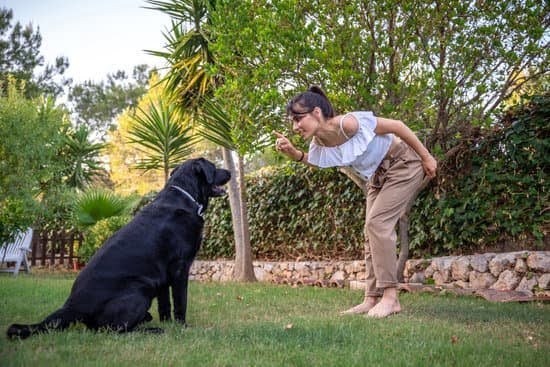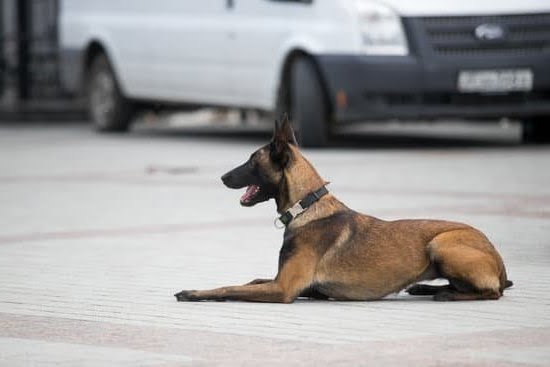Are you wondering how to potty train a 1-year-old dog? Potty training is an essential part of raising a well-behaved and happy dog.
Not only does it make life easier for the owner, but it also ensures the dog’s comfort and hygiene. In this article, we will explore the process of potty training a 1-year-old dog, the importance of understanding your dog’s behavior, establishing a potty training routine, using positive reinforcement, dealing with accidents, avoiding common mistakes, and providing specific tips for different situations.
Potty training is an important milestone in a dog’s development. It sets the foundation for good behavior and helps create a strong bond between the owner and their furry companion. By understanding your dog’s behavior and implementing consistent training methods, you can successfully teach your 1-year-old dog where to go potty.
In addition to exploring the practical aspects of potty training, we will also delve into the emotional benefits of successful training practices. A well-trained dog not only brings satisfaction to the owner but also experiences improved mental and physical well-being. With patience and dedication, you can achieve successful potty training results that will benefit both you and your beloved canine companion in the long run.
Understanding Your Dog’s Behavior
Potty training a 1-year-old dog requires a good understanding of your pet’s behavior. It is essential to be able to recognize the signs that your dog needs to go potty. These signs may include restlessness, sniffing around, circling, or heading to the door. By being aware of these cues, you can take your dog outside in time to do their business.
Consistency is also crucial when it comes to potty training. Dogs thrive on routine and it is important to establish a regular potty training schedule. This means taking them out at the same times each day and praising them when they are successful. Understanding and respecting your dog’s natural instincts and routine will help in successfully potty training a 1 year old dog.
In addition, understanding your dog’s behavior includes recognizing the importance of using positive reinforcement. This means rewarding your dog for successful potty trips with verbal praise and treats. Dogs respond well to positive encouragement and this will encourage them to continue exhibiting good potty behavior. Understanding how to potty train a 1 year old dog involves patience, consistency, and positive reinforcement techniques in order to achieve successful results.
Establishing a Potty Training Routine
Potty training a 1-year-old dog can be a challenging but rewarding process. Establishing a consistent potty training routine is crucial in successfully teaching your dog where to go potty and when. The first step in establishing a routine is to create a regular feeding schedule for your dog. By feeding your dog at the same times each day, you can predict when they will need to go potty, making it easier to anticipate their needs.
In addition to a feeding schedule, it is important to designate a specific potty area for your dog. Whether it’s a patch of grass in your yard or a specific spot during walks, having a designated area will help reinforce the idea that this is where they should go. This also helps eliminate confusion for your dog about where they are supposed to relieve themselves.
Another important aspect of establishing a potty training routine is using a specific potty command to signal your dog to go. Whether it’s “go potty” or any other chosen phrase, consistently using the same command will help your dog understand what is expected of them. By associating the command with the act of going potty, you can eventually use it as a cue for your dog whenever they need to relieve themselves.
By implementing these strategies and being consistent with the routine, you can effectively teach your 1-year-old dog where and when to go potty. Remember that patience and consistency are key when it comes to how to potty train a 1 year old dog, so stick with the routine and be prepared for accidents along the way.
Using Positive Reinforcement
Potty training a 1-year-old dog can be a challenging task, but using positive reinforcement can make the process much smoother and more effective. Positive reinforcement involves rewarding your dog for good behavior, which encourages them to continue that behavior in the future. This section will provide tips and strategies for implementing positive reinforcement in potty training your 1-year-old dog.
Rewarding Your Dog for Successful Potty Trips
One of the key principles of positive reinforcement is to reward your dog immediately after they exhibit the desired behavior. When it comes to potty training, this means giving your dog a treat or offering verbal praise as soon as they successfully go potty in the designated area. It’s important to make sure the reward is given right after the act so that your dog associates it with the specific behavior you want to encourage.
Using Verbal Praise and Treats to Reinforce Good Behavior
This will reinforce the idea that going potty in the designated area is a desirable behavior. Some dogs may respond better to treats while others may prefer verbal praise, so it’s essential to figure out what motivates your specific dog and use that as a form of positive reinforcement.
Consistency Is Key
Consistency is crucial when using positive reinforcement in potty training. Make sure you reward your dog every time they go potty in the designated area, and always use the same command or cue when encouraging them to do so. Consistent positive reinforcement will help your 1-year-old dog understand what is expected of them and motivate them to continue exhibiting good potty behavior.
By implementing these positive reinforcement techniques, you can effectively teach your 1-year-old dog where and when it’s appropriate to go potty, leading to a well-trained and well-behaved pet. Remember, patience and consistency are essential when using positive reinforcement in potty training a 1-year-old dog.
Dealing With Accidents
Accidents are an inevitable part of the potty training process, especially when learning how to potty train a 1 year old dog. Understanding how to handle accidents without discouraging your dog is crucial for their continued progress.
Handling Accidents Without Discouraging Your Dog
It’s important to remember that accidents are a natural part of the learning process for your dog. Reacting harshly or scolding your dog for accidents can create fear and anxiety, making potty training even more challenging. Instead, remain calm and gently redirect your dog to the appropriate potty area.
Cleaning and Eliminating Odors
In order to prevent repeat accidents, it’s essential to thoroughly clean and eliminate odors from any accidents that do occur. Dogs have a strong sense of smell and may continue to use the same spot if they detect residual odors. Use an enzymatic cleaner specifically designed for pet messes to completely remove any traces of urine or feces.
Consistency in Accident Management
Consistency is key when it comes to managing accidents during the potty training process. By responding calmly, redirecting your dog as needed, and ensuring thorough cleanup, you can effectively navigate through accidents without hindering your dog’s progress. Remember that patience is paramount in this process, as learning how to potty train a 1-year-old dog takes time and dedication.
By understanding how to handle accidents while remaining patient and consistent, you can help your 1-year-old dog successfully navigate the potty training process and ultimately achieve long-term success in their potty habits.
Avoiding Common Mistakes
Potty training a 1-year-old dog can be challenging, but it is essential to approach the process with patience and understanding. Avoiding common mistakes can make the potty training experience more successful for both you and your furry friend. Here are some tips on how to potty train a 1 year old dog without making common mistakes:
- Understanding the importance of patience: Potty training takes time and every dog learns at their own pace. It’s important to be patient and consistent in your approach, as rushing the process can lead to confusion for your dog.
- Avoiding punishment for accidents: Accidents are bound to happen during the potty training process. It’s crucial to avoid scolding or punishing your dog for these accidents, as it can create fear and anxiety around the potty training process.
It’s essential to keep in mind that potty training a 1-year-old dog requires a lot of consistency and positive reinforcement. Understanding these key factors will help you avoid common mistakes and set the foundation for successful potty training.
Remember that every dog is different, and what works for one may not work for another. By being patient and avoiding common mistakes, you can create a positive and effective potty training experience for your furry companion.
- Avoid rushing the process
- Do not punish your dog for accidents
Potty Training Tips for Specific Situations
Potty training a 1-year-old dog can present unique challenges, especially for owners living in specific situations such as apartments or for those who work long hours. However, with the right approach and consistency, successful potty training is achievable in any circumstance. Here are some tips to help potty train your 1-year-old dog in specific situations.
For apartment living, it’s essential to establish a regular potty routine and designate a specific area for your dog to relieve themselves. Consider using indoor potty options such as pee pads or artificial grass if taking your dog outside frequently is not feasible. Additionally, be sure to praise and reward your dog when they use the designated potty area to reinforce good behavior.
For working dog owners, consider enlisting the help of a dog walker or pet sitter to take your dog out for potty breaks while you’re away. Establishing a consistent schedule for potty breaks, even when you’re not home, will help reinforce good habits and prevent accidents inside the house. Utilizing positive reinforcement during these times will also encourage your dog to continue exhibiting the desired behavior.
No matter the specific situation, it’s important to remember that every dog is different and may require unique approaches to potty training. Patience and consistency are key when teaching a 1-year-old dog where and when to go potty. By understanding your dog’s behavior and employing the appropriate strategies for your situation, successful potty training can be achieved, strengthening the bond between owner and pet.
Consistency and Patience in Potty Training
Potty training a 1-year-old dog requires a significant amount of consistency and patience. This stage in your dog’s development is crucial for establishing good habits and preventing future issues with accidents in the house. Understanding how to potty train a 1 year old dog involves recognizing the need for consistent efforts and a patient approach.
Consistency is key when it comes to potty training your dog. This means creating and sticking to a routine for feeding, bathroom breaks, and playtime. By establishing a regular schedule, you can help your dog understand when it’s time to go potty and reduce the likelihood of accidents in the house. Additionally, consistency in using the designated potty area and specific command will reinforce the behavior you want to see from your dog.
Patience is equally important when potty training your 1-year-old dog. It’s essential to understand that accidents will happen, especially during the initial stages of training. Reacting with frustration or punishment can actually hinder your dog’s progress and create anxiety around pottying. Instead, remaining calm and patient while consistently reinforcing positive behavior will ultimately lead to successful potty training.
It’s important to remember that every dog is different, so some may pick up on potty training quickly while others may take longer to grasp the concept. By remaining consistent and patient throughout the process, you are setting your furry friend up for success in developing good bathroom habits for the long term.
Conclusion
In conclusion, potty training a 1-year-old dog is a challenging yet rewarding process. By understanding your dog’s behavior, establishing a routine, using positive reinforcement, and handling accidents with patience and care, you can successfully potty train your furry friend. Consistency and patience are key in this process, as every dog is different and may require different approaches to potty training.
By following the tips and techniques outlined in this article, dog owners can build a strong bond with their pets while ensuring a clean and happy living environment for both the dog and the owner. Potty training not only brings satisfaction in having a well-trained dog but also strengthens the relationship between the owner and their pet.
Remember that potty training requires dedication and effort, but the long-term benefits make it all worthwhile. With perseverance and the right approach, any 1-year-old dog can be successfully potty trained. Overall, by understanding how to potty train a 1-year-old dog and consistently applying these methods, both you and your pet can enjoy a happier, more harmonious coexistence.

Welcome to the blog! I am a professional dog trainer and have been working with dogs for many years. In this blog, I will be discussing various topics related to dog training, including tips, tricks, and advice. I hope you find this information helpful and informative. Thanks for reading!





